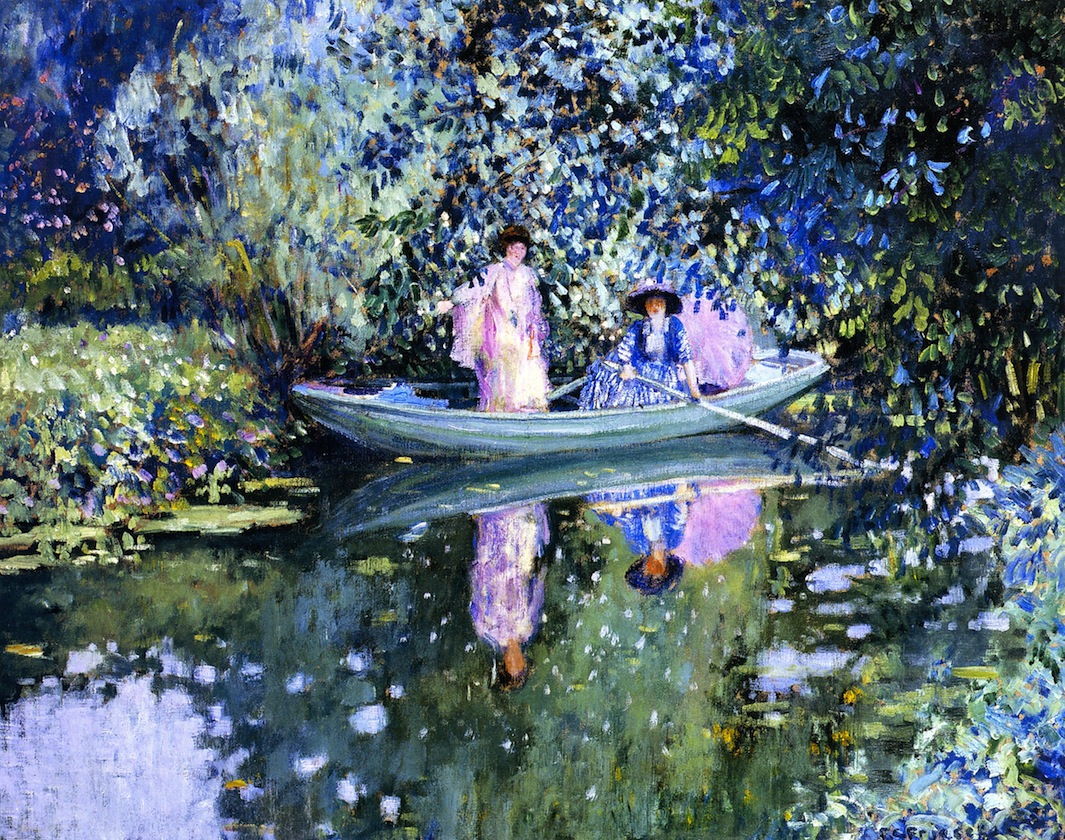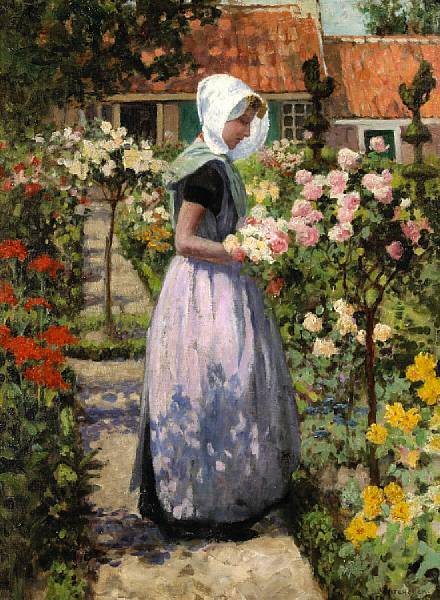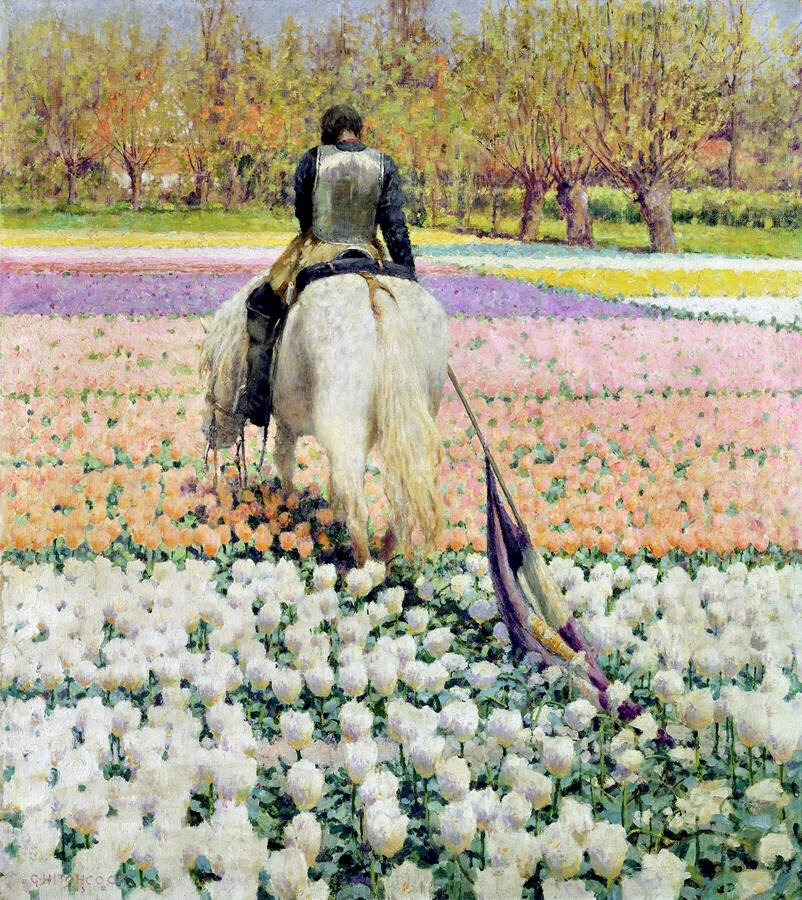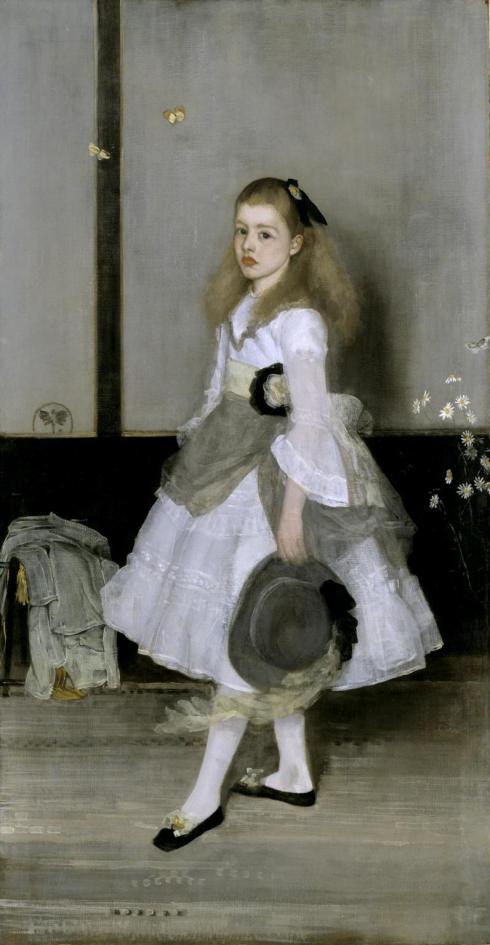 Frederick Carl Frieseke (1874-1939), On the River, 1908
Frederick Carl Frieseke (1874-1939), On the River, 1908
Frederick Carl Frieseke’s painting “On the River” completely encapsulated my mood these days; the warm summer days spent lazing by the river and drowning in the drowsiness of these fleeting summer dreams. The summer is not yet at its height, in fact it’s only begun, and it feels one is flying above the clouds, above the trees, restless and wild and a-thirst for distant things. Frieske was an American ex-patriate artist and his painting style is described as “decorative Impressionism” because he tended to devote all his attention on colours, patterns, shapes, filling his paintings top to bottom with flowers, blades of grass, dots and dashes, not wanting an inch to remain empty or unadorned, in a similar way to Klimt’s countryside scenes. Explossions of colours, vibrancy, rhythm of patterns; I love to immerse myself in Frieseke’s paintings in these lovely summer days, for his art is one of eternal summer, where a woman and a flower are one and the same. Still, for me, his painting “On the River” may be decorative, at first glance, but it is also extremely vivid and realistic because that is how magical the river indeed looks and feels these days.
The painting shows a woman in a little boat in the river with trees leaning low above the waters in the background. The lady is holding a parasol to protect herself from the few golden rays of sun that will manage to make their way through the tree tops. The parasol and the lady’s kimono-like attired are both yellow, yellow like the sun of June, and are a delightful visual contrast with the otherwise dreamy green colour palette. Truly, everything in this painting is painted in one or another shade of green, even the boat, which we might expect to be brown, has taken on the magical greenness of the river. I am just waiting to hear the Faun’s flute and the giggle of the nymphs, to see the dragonflies and fairies. The river seduces me in a way no other thing in nature can, it feels so serene to sit by it and gaze at the passing waters, to see the distant line where the emerald green treetops and the heavy tree branches touch the waters, to hear the fish jumping up here and there, to see the birds flying low above the water, so free and so wild… Another beautiful detail in this painting is the reflection of the lady and her yellow-as-the-sun parasol. Friesieke may be seen as merely ‘decorative’, which is sometimes used in a pejorative sense, but he truly does capture the mood of beautiful summer days and makes the nature come alive, whether in these types of river scenes, and there’s another similar painting bellow, or in his many wonderful garden scenes with hollyhocks and foxgloves and all the flowers one can imagine.
Although Frieseke was an American artist, in 1898, at the age of twenty-four he moved to France and studied art at Academie Julian. He regularly spent his summers at Giverny and in 1906 he moved into a house there, previously owned by another American painter Theodore Robinson, and found himself being a neighbour of none other but the Father of Impressionism: Claude Monet. Despite this lucky coincidence, Frieseke and Monet didn’t develop a friendship. Frieseke found Renoir to be his inspiration instead, inspired by Renoir’s voluptuous women, vibrant colours and a sense of joie de vivre and sensuality lingering through his canvases. Perhaps these two paintings were painted in Giverny.

Frederick Carl Frieseke, Grey Day on the River (Two Ladies in a Boat), c 1908











